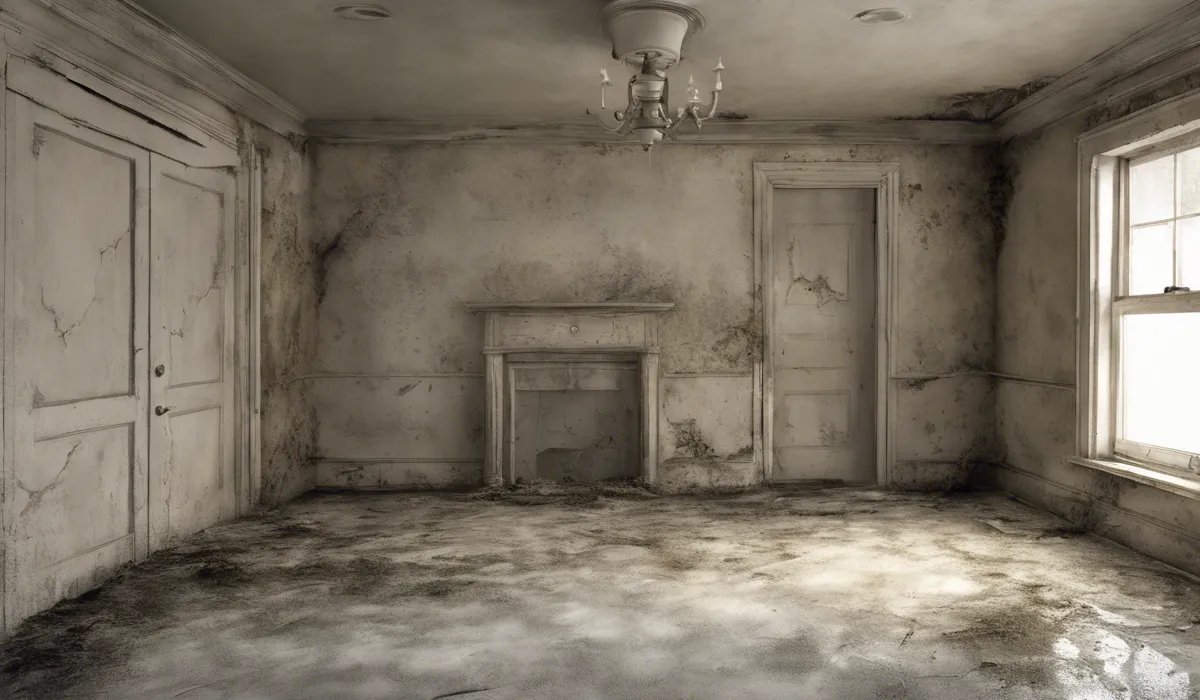Mold is quite common in homes, often found in damp areas like bathrooms and basements. It’s estimated that mold can be found in 70% of homes, with the percentage higher in humid regions. Regular inspection and maintenance are key to preventing mold growth.
Prevalence of Mold in Homes

Statistics on Mold Occurrences in Households
Mold is a familiar guest in many homes, often settling in without notice. In the United States, it is estimated that mold can be discovered in about 70% of households.
This startling statistic reflects just how widespread mold issues are. Even the cleanest of homes can harbor mold spores that, under the right conditions, can flourish into a larger problem.
The common nature of mold in homes underscores the importance of regular checks and maintenance to keep it at bay.
Geographical Variation in Mold Prevalence
Where you live can greatly influence the chances of mold taking up residence in your home.
Areas with high humidity, such as the Southeastern United States, are more prone to mold growth. Conversely, arid regions like the Southwest have a lower incidence of household mold.
Despite this, mold can appear anywhere if the conditions within the home are suitable for its growth.
Seasonal Factors Affecting Mold Growth in Homes
Seasons change, and so do the conditions that allow mold to thrive. Summer’s warmth and humidity offer mold spores the perfect environment to grow.
In contrast, winter can also be a culprit as homes are sealed tight to keep the warmth in, often leading to a buildup of moist air inside.
This seasonal swing makes it crucial for homeowners to be vigilant about mold prevention all year round.
Types of Homes More Susceptible to Mold
While mold can make itself at home anywhere, certain types of houses are more inviting to it.
Older homes, for instance, may have outdated ventilation systems or compromised structures that allow moisture to seep in and get trapped.
Homes in humid climates, or those located in flood-prone areas, also face a higher risk of mold. Keeping an eye out for signs of mold is especially important in these homes.
Factors Contributing to Mold Growth

High Humidity and Moisture Levels in Homes
Mold loves moisture and homes with high humidity levels provide the perfect habitat for mold spores to settle down and multiply.
Activities such as cooking, bathing, and drying clothes indoors can all contribute to raising humidity levels.
Without proper ventilation, this moist air has nowhere to go, creating an environment where mold can thrive.
Lack of Proper Ventilation and Airflow
Fresh air is the enemy of mold. Homes that lack sufficient ventilation can trap stale moist air inside.
When the air does not circulate, it creates pockets where mold can grow undisturbed. Ensuring that your home is well-ventilated and that air can move freely is key to preventing mold colonies from forming.
Water Leaks and Damage Leading to Mold
A small leak may not seem like a big deal, but it can be the beginning of a mold problem. Water damage from leaks, flooding, or even high humidity can soak into walls, ceilings, and floors, providing a fertile ground for mold.
It is essential to fix leaks promptly and thoroughly dry any wet areas to prevent mold from getting a foothold.
Building Materials and Furnishings That Support Mold Growth
Some materials are like a welcome mat for mold. Porous materials such as wood, drywall, and carpet can absorb moisture and give mold an ideal place to grow.
Furniture and other home furnishings can also be susceptible to mold if they become damp and are not dried quickly. Choosing materials and furnishings that are less conducive to mold can help keep your home mold-free.
Health Implications and Risks of Mold in Homes

Common Health Issues Caused by Mold Exposure
Mold is not just unsightly; it can also be harmful to your health. Exposure to mold can cause a variety of symptoms, including sneezing, coughing, throat irritation, and nasal congestion.
For those with allergies or asthma, the presence of mold can lead to more severe reactions such as wheezing or difficulty breathing.
Vulnerable Populations and the Impact of Mold on Them
Certain groups of people are more sensitive to the effects of mold. This includes young children, the elderly, and individuals with compromised immune systems or respiratory conditions.
For these populations, mold can pose a significant health risk, making it even more important to maintain a mold-free home environment.
Long-Term Risks of Living in Mold-Infested Environments
Living with mold over the long term can lead to more than just temporary discomfort. Chronic exposure to mold may result in more serious health conditions, including persistent respiratory issues and potentially immune system disorders.
It is vital to address mold problems quickly to avoid these long-term health risks.
Importance of Mold Detection and Remediation for Homeowner Health
Detecting and eliminating mold is crucial for maintaining a healthy living space. Homeowners should regularly inspect their homes for signs of mold and take action to remove it when found.
Professional remediation may be necessary to fully address the issue, especially in severe cases. By staying vigilant and proactive, homeowners can protect their health and their homes from the risks of mold.
FAQs About Mold Prevalence in Homes
How common is mold in residential properties?
Mold can be found in approximately 70% of homes, especially in damp areas.
Are some regions more prone to in-home mold issues?
Yes, homes in humid regions are more likely to have mold problems.
What parts of the home are most vulnerable to mold?
Bathrooms and basements are the areas most susceptible to mold growth due to higher moisture levels.
How can homeowners prevent mold growth in their homes?
Regular inspection and maintenance, such as controlling humidity levels and fixing leaks, are key to preventing mold growth.
Is mold in homes a common issue year-round?
Mold can occur at any time of year but is more common during warmer, humid months or in consistently damp environments.
Final Thoughts
Mold presence is a frequent issue in residential environments, particularly in moist spaces like bathrooms and cellars.
Approximately 70% of homes encounter mold, with even higher incidences in areas with high humidity. Proactive inspections and routine upkeep are essential strategies to curb the proliferation of mold in these settings.
